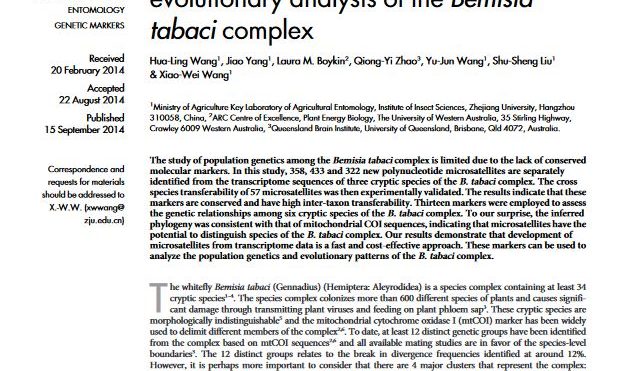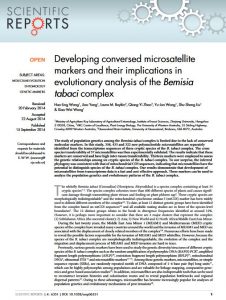The study of population genetics among the Bemisia tabaci complex is limited due to the lack of conserved molecular markers. In this study, 358, 433 and 322 new polynucleotide microsatellites are separately identified from the transcriptome sequences of three cryptic species of the B. tabaci complex. The cross-species transferability of 57 microsatellites was then experimentally validated. The results indicate that these markers are conserved and have high inter-taxon transferability. Thirteen markers were employed to assess the genetic relationships among six cryptic species of the B. tabaci complex. To our surprise, the inferred phylogeny was consistent with that of mitochondrial COI sequences, indicating that microsatellites have the potential to distinguish species of the B. tabaci complex. Our results demonstrate that development of microsatellites from transcriptome data is a fast and cost-effective approach. These markers can be used to analyse the population genetics and evolutionary patterns of the B. tabaci complex.
Region: Not specific
Date published:
2014
Published by:
Scientific Reports
Type of resource:
Journal article
Resource topic:
Whitefly
Project/Programme: Not specific
Pest/Disease: Whitefly
Pages:
10
File type:
External link (863 KB)




